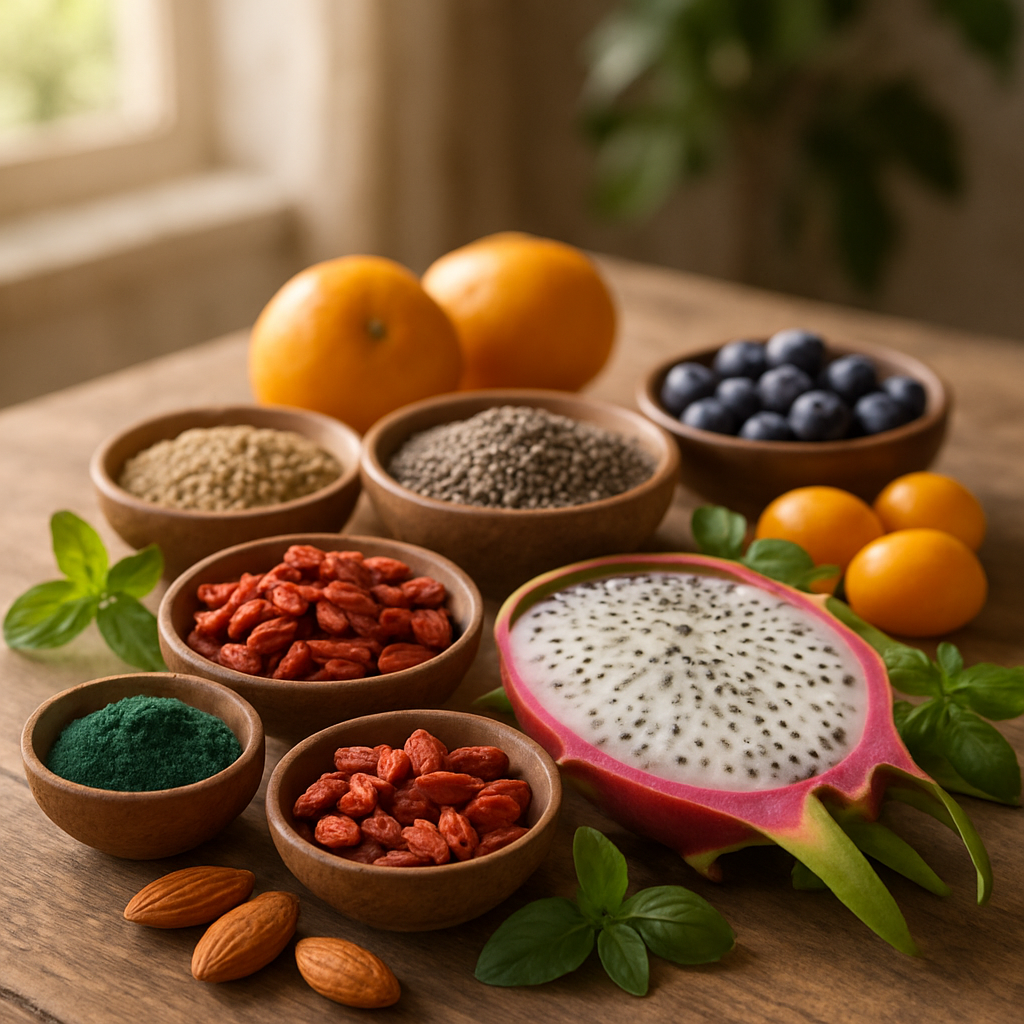Hidden Superfoods The Unseen Benefits of Natures Forgotten Gems

Nature has always been a generous provider, offering a bounty of foods so potent they’ve been dubbed “superfoods.” But while kale, quinoa, and chia seeds take the spotlight at health food stores, there exists an array of lesser-known edibles packed with nutrients that could give these celebrity foods a run for their money. It’s like discovering a hidden gem in an old, dusty attic except these gems could add years to your life and vibrance to your health, not to mention a little extra color and flavor to your plate.
The Curious Case of the Baobab Fruit
Let’s start with the baobab fruit. It’s not the kind of fruit you casually stumble upon at your local grocery store. Originating from Africa, the baobab fruit grows on trees that often look like they’ve been planted upside down. The fruit itself resembles a coconut, albeit slightly misshapen, but inside, it’s a different story. The pulp is naturally dry, like a powder, and can be eaten or used as a supplement. I once attempted to make a baobab smoothie, only to end up with a concoction that was more pulp than liquid. But those tangy bites packed a punch with more antioxidants than blueberries and more vitamin C than oranges.
The baobab is a powerhouse in terms of fiber too, with half the fruit being soluble and the other half insoluble. This makes it a great aid for digestion and maintaining a balanced gut microbiome. While I can’t quote the exact studies (I’m just going off what I read in a health magazine while waiting for my coffee), the claims are compelling. Dr. Sarah Brewer, a renowned nutritionist, even mentions that the fiber content could contribute to lowering blood sugar levels handy if you’ve got a sweet tooth like me.
Moringa The Miracle Tree
Now, onto the moringa tree often dubbed the “miracle tree.” I remember the first time I tasted moringa tea. It was earthy, a bit like spinach had decided to become a drink. But the health benefits are far from typical. Every part of the moringa tree is usable: from seeds to leaves, each segment offers something valuable. The leaves, rich in protein, vitamins, and minerals, are a notable source of iron and calcium. If Popeye had known about moringa, he might’ve swapped his spinach for this instead.
The tree has been a staple in traditional medicine for centuries. There’s an interesting tidbit I read about the seeds’ ability to purify water, which might seem a bit out there, but it’s true. The seeds contain a natural flocculant that can help clarify water, a technique used in some developing regions. That’s nature being resourceful at its finest.
Speaking of, a point of curiosity: while we in the West are just catching on to moringa’s potential, it’s been a nutritional and medicinal staple in South Asia for ages. It’s like discovering a blockbuster film that everyone else has already seen. Better late than never, right?
Sea Buckthorn The Underwater Wonder
Moving away from trees and fruits, let’s wade into the world of sea buckthorn. This isn’t something you find washed up on the beach, despite the name. These orange berries grow on shrubs found in Europe and Asia. Their tartness is unforgettable, like biting into a lemon while expecting an apple. But boy, are they loaded with omega-7 fatty acids a rarity in the plant world and vitamins A, C, and E. I once tried a sea buckthorn facial oil, and while I can’t say it made me look ten years younger, my skin did feel quite rejuvenated.
Sea buckthorn has been used in traditional Tibetan medicine and is currently drawing interest from researchers for its potential to improve heart health and reduce inflammation. I can’t help but think of it as the undiscovered starlet of the superfood world, waiting for its big break.
The Peculiar Journey of Salsify
And then there’s salsify, often dubbed the “oyster plant.” It’s not actually related to oysters, but its flavor supposedly mimics them when cooked. I can’t vouch for that personally, as my cooking ventures with salsify have resulted in a taste closer to artichokes. Salsify is a root vegetable rich in potassium and inulin, a type of fiber that acts as a prebiotic. This helps promote digestive health by feeding the good bacteria in your gut.
The root has a long history in European cuisine but has fallen out of favor, overshadowed by its more glamorous cousins like sweet potatoes and parsnips. But salsify is making a comeback in gourmet kitchens, where chefs are rediscovering its versatility. It’s funny how foods can fall in and out of fashion, much like bell-bottoms and neon colors.
The Resurgence of Amaranth
Amaranth now there’s a grain with a pedigree. Revered by the Aztecs and often seen as a weed by modern gardeners, it’s a nutritional heavyweight. Amaranth is gluten-free, high in protein, and packed with lysine, an amino acid often lacking in grains. I tried cooking it once, and while my first attempt had the texture of porridge gone wrong, by the fourth attempt, I had a nutty, chewy side dish that was both filling and comforting.
This ancient grain is versatile, finding its way into everything from breakfast porridge to bread. If you’re into baking, substituting a portion of regular flour with amaranth flour can up the nutrient content of your goods without a second thought. I used it in pancakes and didn’t tell my family until after they’d devoured the lot. They didn’t notice the difference except for my dad, who said they tasted “earthy,” which I took as a compliment.
Camu Camu’s Vitamin C Surge
Ever heard of camu camu? It’s a small berry from the Amazon rainforest, and boy, does it pack a punch. Known for its extraordinarily high vitamin C content I’m talking 30 to 60 times that of an orange this berry is often used in powder form. While I haven’t had the pleasure of trying it fresh, the powder adds a tangy zest to smoothies and juices. I’ve read that it can help boost the immune system, and during the winter months, I’m not taking any chances.
Dr. Michael Greger, author of “How Not to Die,” often talks about the benefits of high-antioxidant foods, and camu camu fits that bill perfectly. If you’re into natural skincare, some claim it can even help with skin elasticity and reduce fine lines, though I wouldn’t throw away your moisturizer just yet.
A Final Thought on Nature’s Bounty
The world is full of fascinating foods waiting to be rediscovered. While it’s tempting to stick with the tried and true, exploring these hidden superfoods can be a delightful adventure one that might just lead to better health and well-being. It’s like opening a new book, unsure of where it will take you, but knowing that the journey itself is worth it. Whether you’re sipping on moringa tea, experimenting with salsify in your dinner recipes, or simply sprinkling a bit of baobab powder into your morning smoothie, these forgotten gems from nature’s pantry might just surprise you. And who knows, you might just stumble upon the next big thing in superfoods before it hits the mainstream.


